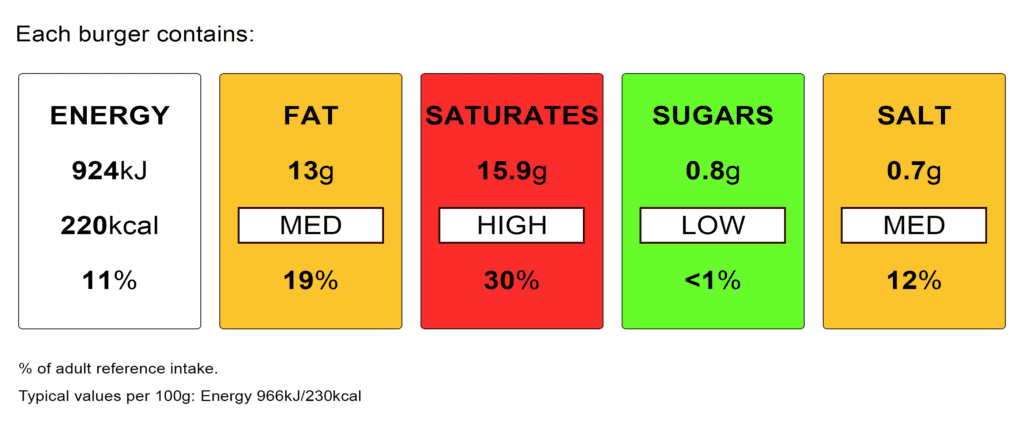Nutritional information labels on food and drink products can help us choose between them and keep check on the amounts of calories, fats, salt and added sugars contained in them.
However, in South Africa nutritional information tables for food and drink products are not yet a mandatory requirement. Should the manufacturer so wish, they may indicate such a table.
These tables can help us in having a balanced diet. Should we be having foods and drinks high in fats, sugars and salts, best we have these less often and smaller amounts.
Most people in South Africa are consuming too many calories, too much fat, sugar and salt and not enough fruit, vegetables, oily fish and fibre.
Nutrition information labels on the back or side of packaging
Most pre-packed foods have a nutrition information label on the back or side of the packaging. These labels must include the amount of energy in kilojoules (kJ) and or calories (kcal). They must also contain the amount of fat, saturated (saturated fats), carbohydrates, sugars, proteins and salts contained in the product. They may also include other nutrients like fibre.
This nutritional information is provided either per 100 grams or per 100 millilitres, or per portion or per pack we drink. We should take into consideration that our portion size may differ from the manufacturer’s portion size as this can affect things.
How to know if a food or drink is high in fats, saturated fat, sugars or salts?
There are some general guidelines that we can use to tell if a food is high in fat, saturated fat, salt and sugar or not.
Fats
More than 17.5g of fat per 100g would be high and 3g of fat or less per 100g would be low.
Saturated fats
More than 5g of saturated fat per 100g would be high and 1.5g of saturated fat or less per 100g would be low.
Sugars
More than 22.5g of total sugars per 100g would be high and 5g of total sugars or less per 100g would be low.
Salts
More than 1.5g of salt or 0.6g sodium per 100g would be high and 0.3g of salt or 0.1g of sodium or less per 100g would be low.
If we’re trying to cut down on saturated fat for example, eat fewer foods that have more than 5g of saturated fat per 100g.
For drinks, different criteria are used to determine if it is high or low in fat, saturated fat, sugar or salt.
Some nutrition information labels also provide information about reference intakes.
Nutrition labels on the front of packaging
Some food manufactures and supermarkets now also highlight the energy, fat, saturated fats, sugar and salt content on the front of their packaging alongside the reference intake for each of these. This proves to be very helpful if we want to compare different food and drink products at a quick glance.
The front labels usually give us a quick guide to the energy (calories), fat content, saturated fats content, sugar content, salt content and sometimes the energy in kilojoules (kJ) in 100g or 100ml, or a serving or portion of the product. But again, be aware that the manufacturer’s portion may be different from ours.

The reference intakes could be easily provided in a traffic light system of red, amber and green colourings.
This colour-coded system informs us at quick glance of the product’s energy content, and if it has high, medium or low amounts of fat, saturated fat, sugar and salt. Red meaning high, amber meaning medium and green meaning low.
In general, if a food product or drink has mostly green on the label, it would be the healthier choice. Amber would mean neither high or low, so we can have products or drinks with mostly or all amber on the labels most of the time. But if there is any red on the label, it means that the food product or drink is high in either fat, saturated fat, sugar or salt and we should limit our intake thereof. Try and eat such food products or drinks as few a times and in as small a quantity as possible.
Ingredients list
All pre-packed food products should have a list of all the ingredients with any possible allergens highlighted on the packaging or an attached label. The ingredients list can also help us determine how healthy the product is.
The ingredients contained must be listed in descending order of weight, so the main ingredient in the packaged food would be at the top of the list. That would mean that if the first few ingredients are high-fat items such as cream, butter or oil, then the food product is likely to be a high fat food.
Munchies4U does not provide professional dietary advice. If you or someone you care for has special dietary requirements, medical needs or an eating disorder, please seek advice from a registered healthcare professional.